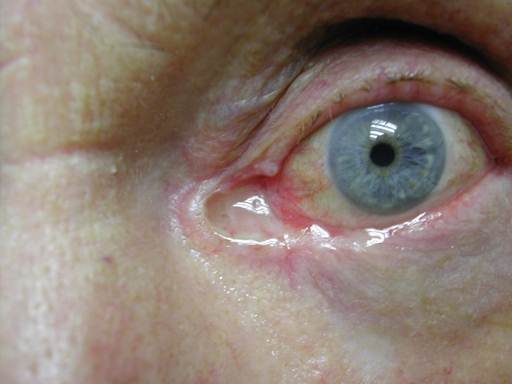
Basal cell carcinoma (BCC) is a type of skin cancer most commonly found on sun-exposed skin. Scalp, upper ears, face, and shoulders are areas I most commonly find our patients’ BCCs. These are the most common form of skin cancer, accounting for over 80% of all skin cancers. BCCs are slow growers and can take years to become metastatic (spread to distant parts of the body), but a BCC will continue to grow locally, aggressively, destroying normal tissue in its path. On the face, where there is limited real estate before a BCC affects vital structures like eyes and nose, the effects can be devastating.
Basal cell cancers can be very superficial, involving the epidermis only – these are called superficial BCCs. BCCs can be nodular with a more aggressive vertical growth phase. Or the trickiest BCCs to diagnose are morpheophorm BCCs which can often masquerade like a non-healing scar. Over time, when neglected, BCCs dive below the skin’s surface through dermis and fat, and eventually to muscle and bone.
The standard of care for addressing BCCs of any type is surgical excision. Removing the entire BCC with a thin surrounding margin of normal skin. This is an out-patient procedure that takes about 10-15 minutes. We use fast-acting local anesthetic to numb the skin prior every procedure so, while not entirely painless, its way easier than a trip to the dentist. Stitches remain in for 10-14 days on the body and 5-7 days on the face for optimal healing.
There are other ways, however, to treat BCCs for the less surgically inclined.
Topical chemotherapy agents are now more commonly used to treat skin cancers without cutting the skin. These agents block cancer metabolism and can arrest a BCC’s growth within a few weeks. We always take a biopsy from your skin afterwards to make sure the coast is clear.
This is “derm-speak” for scrape and burn. The scars aren’t the prettiest following this method, but a quick way to rid the body of smaller, superficial BCCs in a non-cosmetically sensitive area (for example, under a full head of hair) would be to ED&C them. Pain here, after a local anesthetic, is also minimal. There are no stitches and the procedure can be performed in under 5 minutes.
Light sources can also be used to treat BCCs although these therapies are less commonly employed for deeper lesions. We’ll pre-treat your superficial BCC with a chemical known as amino levulinic acid (ALA) that activates when exposed to various light frequencies. Cancerous cells then absorb this activated ALA and are destroyed. There is no pain associated with this procedure and no stitches either…it just doesn’t always work in which case we’re back to Square 1.
For recurrent or surgically complex BCCs, we turn to Moh’s surgery – a novel approach to stepwise removal of a BCC. Patients who receive this intensive surgery should plan to spend a full day with their Moh’s surgeon who meticulously removes 1-2mm at a time from the BCC’s edge. This is called a “stage”. After each stage the Moh’s surgeon checks the edge of her new sample to insure she’s removed the last of the BCC. If she hasn’t, she’ll return to the surgical site for 1-2mm more and another stage.
BCC 5 year survival rates are very high, over 95%, but neglect of these devastating skin cancers can lead to significant morbidity and mortality.
If you notice any of the following on your skin, come on in and let’s have a look: